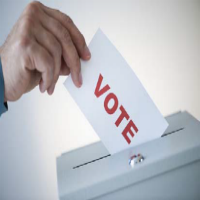Initiative & Referendum Institute: Ballotwatch
Election 2018 Preview
Election 2018 Preview
On November 6, voters in 37 states will decide 158 ballot propositions. The issues vary across the country; several states are voting on the rights of crime victims, expansion of health care, and marijuana legalization. Direct democracy activity shows no sign of falling off from the peak levels sustained since the 1990s.
Overall Trends
The 158 propositions on November ballots is up one from the 157 in 2016, and up 14 from the 144 in 2014, but below the 21st century peak of 204 in 2006. Including proposition elections that were held before November, the total of 170 propositions is up from 165 in 2016 and 156 in 2014, but below the 21st century peak of 236 in 2000.
Ballot “proposition” or “measure” is an umbrella term for a law that comes to a vote of the people. Under this umbrella are several variants. The highest profile propositions are initiatives, new laws proposed by citizen petition. This November, 40% of propositions, 63 in total, are
.bmp) |
initiatives. This is down from 74 in 2016, which was the highest in the 21st century. For more information on initiative trends, see IRI Report on Initiative Use (1904-2017).
The most common propositions are those placed on the ballot by legislatures, often called legislative measures or legislative propositions. There are 84 legislative measures on the ballot in November. A relatively rare type of proposition is the referendum (sometimes popular referendum or veto referendum), in which citizens place an act of the legislature on the ballot by petition. There are two referendums in November and three was decided earlier this year.
For additional information on ballot measures, particularly updates of individual state ballots, see ballotpedia.org and updates of this report on ballotwatch.org and iandrinstitute.org.
Multistate Issues
Every year, some issues appear on the ballot in multiple states. This can happen because of a coordinated campaign by an interest group, or as individual states respond to a common event, such as a court ruling, or learn from each other. Multistate issues can take on a life of their own and spread across the country if they meet with voter approval initially and reveal popular support for an issue. For this reason, multistate issues are worth watching as possible leading indicators of national trends.
Marijuana
Marijuana legalization continues to be one of the leading issues in ballot propositions this year. States began approving use of marijuana for medical purposes in the 1990s. In 2012, voters in Colorado and Washington took the next step by legalizing recreational use of the drug. Other states have followed in subsequent years: Alaska, Oregon, and the District of Columbia in 2014, and California, Maine, Massachusetts, and Nevada in 2016. This year, two more states are voting on legalization: Michigan and North Dakota. Missouri and Utah are voting on whether to allow medical marijuana, and Oklahoma approved a medical marijuana measure in June. Marijuana remains illegal under federal law, but so far states representing about one-quarter of the country’s population have decriminalized it within their borders.
Health Care
Another issue attracting multi-state interest is health care, in particular, expansion of Medicaid. The Affordable Care Act (often called “Obamacare”) allowed states to expand Medicaid eligibility to persons with incomes up to 138% of the federal poverty rate, with the federal government covering up to 90 percent of the cost. Some states chose not to expand eligibility. Initiatives in Idaho, Nebraska, and Utah would force those states to expand eligibility. These measures follow in the footsteps of Maine, which approved the first such measure in 2017.
In California, competing interests have launched an expensive campaign related to another health-related measure. Proposition 8 would regulate the price charged by dialysis clinics. As of early October, healthcare worker unions had raised $18 million in support, and opponents — mainly dialysis clinics — had raised $52 million in opposition. With $70 million committed so far, Proposition 8 is shaping up to be the most expensive measure in California, if not the country, this year.
Crime Victims Rights
Several states are voting on laws to provide expanded rights to crime victims, sometimes called “Marsy’s Law”: Florida, Georgia, Kentucky, Nevada, North Carolina, and Oklahoma (and South Dakota approved a proposition modifying its law in June.) The laws vary from state to state, but generally call for crime victims to be treated with respect and dignity, and grant them the right to participate in and be informed about legal proceedings, such as bail, sentencing, and parole hearings.
Bond Issues
Many states require voter approval in order to issue general obligation bonds. There are 17 bond issues across six states this November, requesting a total of $25 billion. California is asking for the most, $14.4 billion dollars, including $8.877 billion for water projects (on top of $4 billion approved in June). Coming in second is Colorado, which is requesting $9.5 billion total in two propositions, one of which takes the form of $6 billion in revenue anticipation bonds funded by a sales tax increase. The other states with bond issues are Maine, New Jersey ($6.137 billion), New Mexico, and Rhode Island.
—-——-—–—- IRI ——–———
Initiative & Referendum Institute
University of Southern California Gould School of Law
Los Angeles CA 90089-0071 Phone: 213.740.9690
* * *
Please direct media inquiries to Gilien Silsby, Director of Public Relations, (213) 740-9690 (office), (213) 500-8693 (cell), gsilsby@law.usc.edu.

















